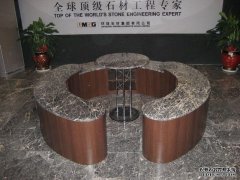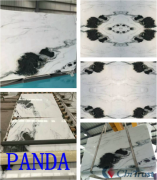Stone Foundation Repair - What to Do
Owning an historic property with an old stone foundation can be an interesting experience. Those with a strong will and a sound pocketbook can be true caretakers of a piece of history. The foundation of that history is the simple, bold and strong field stone foundation wall.
Older buildings with a stone foundation will generally have the original stone facing visible on the exterior and interior of the building. However it was common to apply a coating of plaster to the interior foundation wall in the basement area, as a means of waterproofing so the stone may not be visible from inside of the building.
Most of the original plaster would have worn off by today but if you are lucky, you just may run across an old stone foundation still in pristine condition but this would be the exception.
Usually after 30 - 50 years the foundation would have shifted cause cracks to appear in the foundation wall and it wasn't uncommon to apply a second to the foundation with a masonry cement stucco. If the second layer is cement stucco than it would indicate that the second coating must have been applied after the early 1900's, when mass produced cement stucco became available.
Regardless if plaster or stucco was applied to the walls, they will look lumpy as the individual stones shapes will show beneath the plaster or stucco.
What to look for -A lot of these older stone foundations were never well maintained and can challenge a building owner with problems ranging from water leakage, mortar turning into sand, loose stones and bulging walls. Anything beyond these few maintenance problems could be considered 'in failure' and may need an engineer's inspection.
Stone foundation walls that leak - It wasn't uncommon for these old stone foundation walls to leak. When they were originally constructed a hole was simply dug to the dimensions of the building and a trench dug where the walls were to be placed. Large field stones would be placed in the trench and became the bed stones of the foundation wall.
Drain tile were not in use around the foundations of older building so static pressure would have been a problem from the beginning depending or the soil type and topography. A high quality builder would have trenched to daylight from the low corner of the building site to take water away from the foundation, if the site permitted. The trench would be partially filled with rubble stones before covering but this simply drainage technique would be an exception and not the rule.
Most of the older homes were constructed high off the ground to keep moisture to a minimum. The basement area for these homes where never intended to be used as living space so a little moisture would have been common and of no concern.
Stone foundation wall problems - Decades of water infiltration will cause deterioration to the stone foundation walls. The result can be bulged walls from excessive static pressure or settlement of the foundation, deteriorated mortar joints from excessive moister or loose stones and missing mortar joints from simple aging and movement.
Bulged walls - This problem presents the biggest hurdle for a building owner depending on the degree and severity of the bulging problem and the location within the foundation wall. Generally though, a portion of the foundation wall can be removed and rebuilt but proper shoring must be in place to support the building load before you proceed. This should not be out of the range of an experienced mason contractor and you should seek their advice.
Loose stones and missing mortar - These items are simple to remedy. Loose stones should be taken out and re-set with fresh mortar. Care should be taken not to undermine any critical support areas within the foundation. If you suspect an area of loose stone is carrying a beam load or other loads then consult a professional for advice.
Holes and missing joints can be filled with mortar or tuck-pointed to help tighten the foundation walls. Any brand of masons mix available at the local box store should be adequate.
After you have completed the repairs mentioned above you may wish to apply another layer of cement stucco. This will help to smooth out imperfections, close small holes, 'stiffen' the walls surface and hopefully provide some protection against water leaks.
Check the foundation annually and make any necessary repairs immediately. By taking immediate action and implementing the repairs recommended above you will be one step closer to keeping that old, stone foundation in shape.
Michael Olding is tradesman and consultant in the field of restorations and repairs and currently operates a restoration and repair business in Cincinnati, Ohio. He is also a Master in the field of masonry construction, restorations and repairs.
Monthly Recommendation
Recommended News







